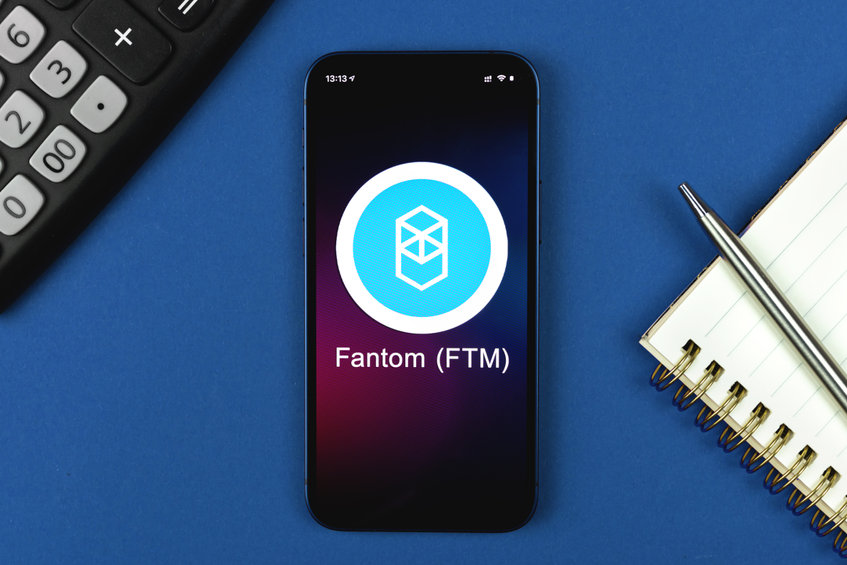
- Stader Labs is working on an implementation that will bring Liquid Staking Pools to Fantom, making staking easy for FTM holders, the platform noted in an announcement last week.
- Fantom CEO Michael Kong says the integration will benefit FTM users and the wider DeFi ecosystem.
Stader Labs recently announced integration with Fantom (FTM), promising to bring liquid staking pools and other exciting features to Fantom users.
With liquid staking, FTM users will find it easy to mint liquid tokens on their staked FTM tokens. They will then be able to leverage these newly minted tokens across DeFi protocols on the Fantom network and elsewhere as part of their investment strategies.
Ease of access to stake pools is also set to see FTM holders easily earn staking rewards, Stader Labs said in a statement.
Fantom CEO Michael Kong commented on the integration as one that “offers an incredibly simple avenue for crypto enthusiasts to put their assets to work.” He added that it would help “generate value for users.”
Fantom CEO’s comments on the Stader Labs integration
We sought to get more from the Fantom CEO, particularly his views of the integration and Fantom’s growing stature within the broader DeFi space. Here’s what he had to say in comments exclusive to CoinJournal.
CJ: Staking has steadily become one of the prime avenues for cryptocurrency users to get passive income and we see TVL on the Fantom network reached over $12.8 billion in January amid the broader market correction. That figure has dropped to about $8.8 billion. What are your thoughts on FTM staking even as you add Stader Labs’ great features to Fantom DeFi?
MK: The TVL on Fantom represents the value of assets in USD that have been deposited into DeFi protocols, both FTM and non-FTM tokens, while staking is when users stake their FTM tokens in order to help secure the network, as it is based on Proof of Stake.
I believe Stader Labs will help increase the amount of FTM staked and TVL as they offer a convenient and safe method of staking via their interfaces on the user’s behalf. By adding additional functionality to FTM such as “liquid staking” users will be able to take advantage of both participation in Proof of Stake and the DeFi ecosystem.
CJ: Fantom is currently ranked 5th on the list of largest DeFi blockchains in terms of total value locked (TVL) and hosted protocols. What makes Stader Labs stand out and how does this announcement help Fantom in the DeFi space?
MK: Stader Labs offers a unique service that we currently don’t have on Fantom, namely “Liquid staking”. This allows users to earn rewards while securing the network and participating in DeFi, thus adding more functionality to FTM while also helping to grow the ecosystem. It’s enormously beneficial for both users and the ecosystem.
CJ: The PR says Fantom will benefit from Stader Labs’ “modular approach to building smart contracts.”Are there third-party networks you think are ready to jump onto Fantom to leverage Stader Labs’ solution?
MK: Stader Labs will allow projects in the Fantom ecosystem to integrate their smart contracts directly into their Dapps. I believe we will see all kinds of DeFi applications ranging from Dexes to lending and borrowing protocols that integrate with Stader Labs.
CJ: NFT trading is a growing part of the crypto ecosystem, with over $20 billion in trading volume generated in 2021. The volume is expected to jump even further in 2022. How is the Fantom platform positioned in this respect, and is the integration with Stader Labs going to have an impact?
MK: The Fantom ecosystem has seen increasing growth in NFT projects and sales. There are now five NFT marketplaces on Fantom the Foundation has identified (PaintSwap, NFTKey, Artion, Opera House, and Zoocoin). The Foundation is helping to support the growth of NFTs by providing technical, marketing, and incentives via an incentive program aimed at NFT applications, while also making strategic investments in projects that will drive growth in the ecosystem.
By building additional functionality for Fantom, Stader Labs will help drive ecosystem growth, and I believe many of those new users will also participate in NFT projects on the platform.
CJ: Integration with Stader follows that with Shopping.io last month. Are there more to come and what sectors of the crypto ecosystem is the Fantom Foundation looking at to promote the network’s growth and adoption?
MK: We are seeing more and more projects and infrastructure providers deploy on the Fantom network, increasing the functionality for both users and developers. The Fantom ecosystem will continue to see a strong level of growth.
CJ: When can the Fantom community expect to start taking of the Liquid staking and Stake pools solutions? Are there any specific steps FTM holders need to take before they start using the features?
We are working very closely with the Stader Labs assisting their technical integration. More information will be announced closer to the launch date. FTM holders should find the integration convenient and intuitive to use.
Fantom is a layer-1 blockchain platform that offers high scalability, fast transactions, and very low fees.
The post Fantom CEO Kong: Stader Labs’s integration will help drive ecosystem growth appeared first on Coin Journal.





